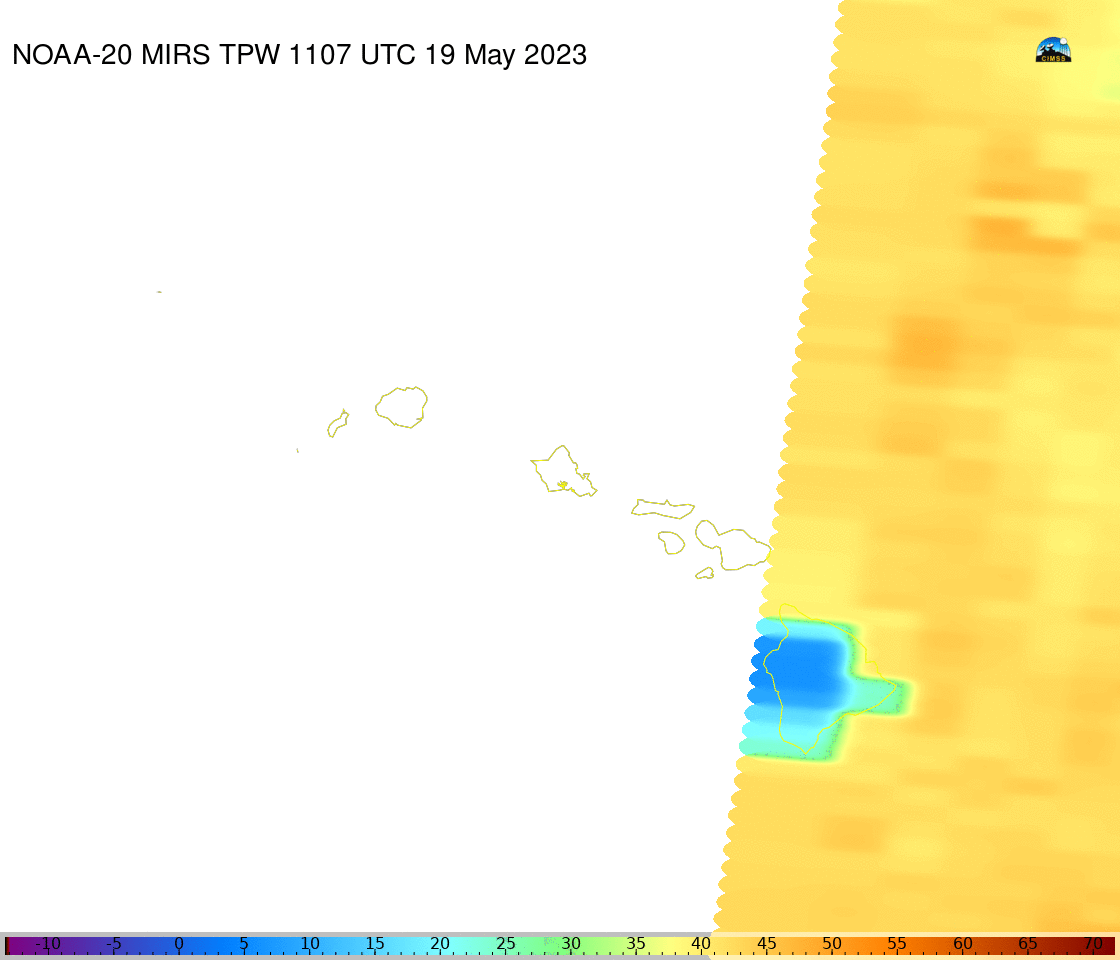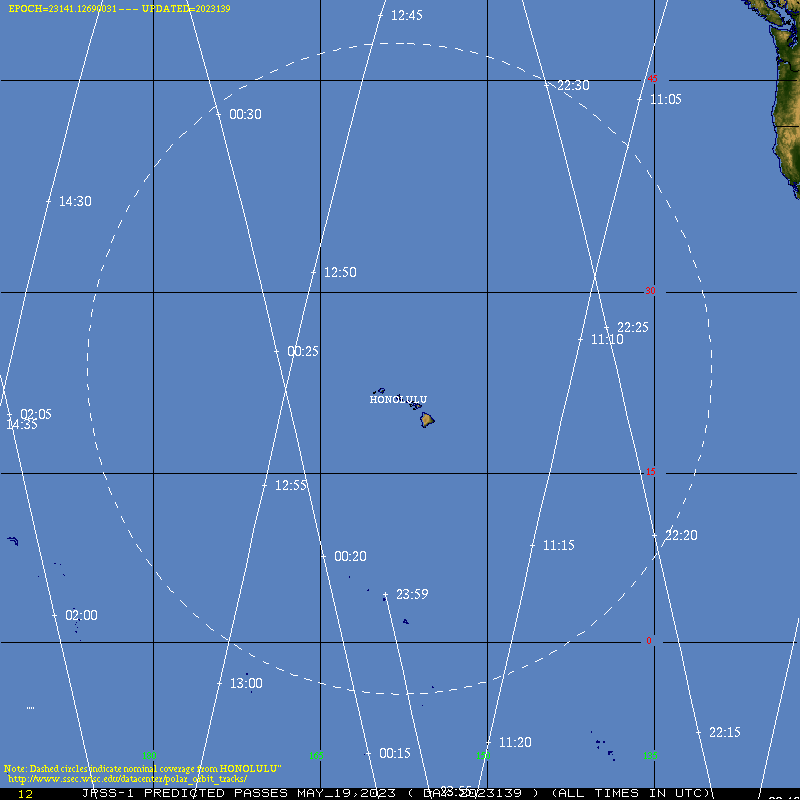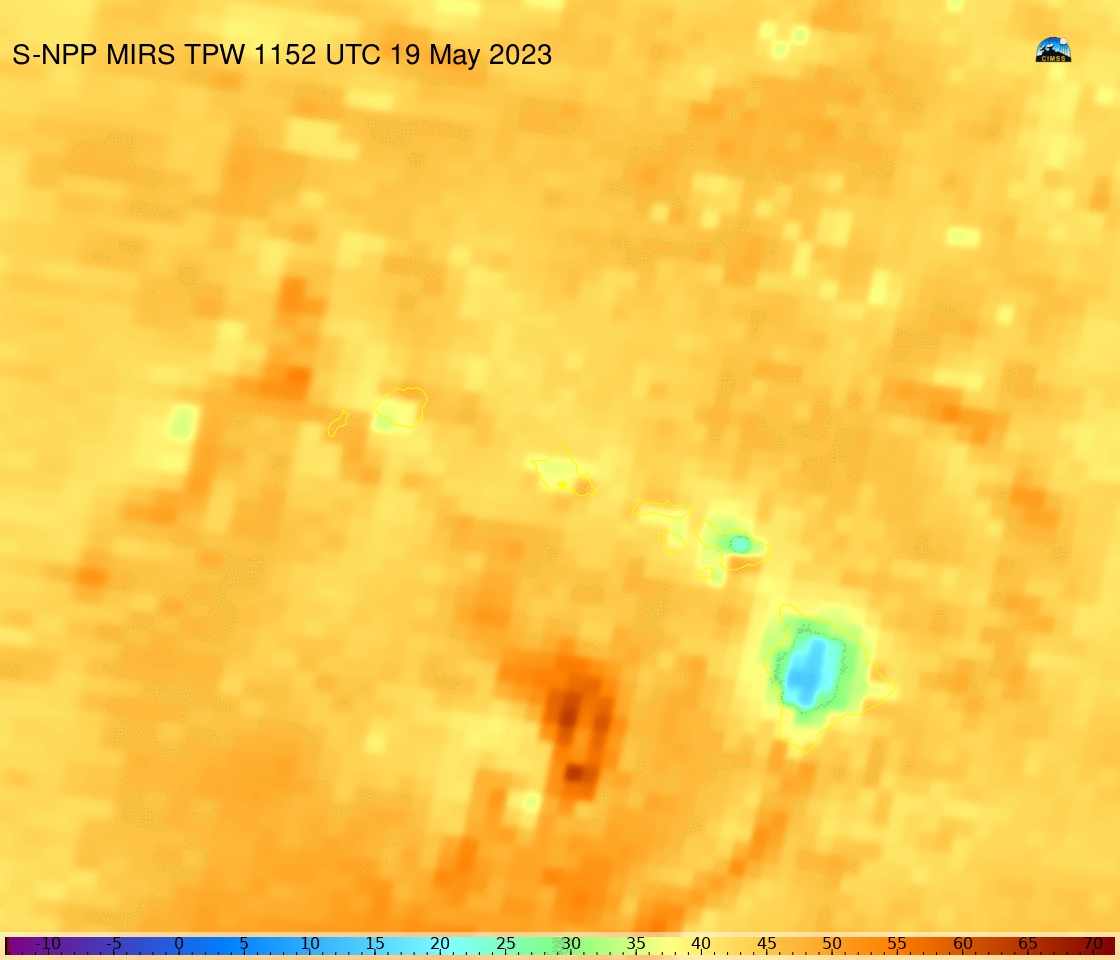When two JPSS satellites are necessary

A recent blog post detailed a heavy rain event over the Kona section of Hawai’i, and the rain occurred several hours after NOAA-20 overpasses that included an unfortunately-placed data gap that included the Big Island of Hawai’i. Thick clouds over the region meant geostationary satellites could not provide information about the thermodynamics surrounding Hawai’i. The image below shows the early morning NOAA-20 orbits on this day. The pass just after 1100 UTC was far to the east of Hawai’i, and the pass before 1300 UTC was too far to the west to give good coverage over Hawai’i. The toggle above shows MIRS (that is, from microwave data) TPW values from NOAA-20 at the two times, downloaded from the NODD (NOAA-20 MIRS data are here; Suomi NPP are here) and processed with Polar2Grid to create imagery. Data over Kona is from the limb view and as such will have very poor resolution. However, of note (considering the development of convection over Kona between 1500 and 1600 UTC) is the maximum in TPW — orange values in the enhancement — west of Hawai’i and south of Oahu. How might that have evolved with time?

Suomi NPP and NOAA-20 orbits are such that they are half an orbit apart, so on this date Suomi NPP overflew Kona at 1150 UTC, giving a high resolution microwave view of Kona at a time in between the two NOAA-20 overpasses.

The single image TPW field from Suomi NPP, below, from 1152 UTC, shows some interesting features that might have influenced the line of convection that developed over Kona (the western portion of the big Island of Hawai’i). Note in particular the higher TPW values with a maximum extending south of the Big Island (highlighted by the arrow below), and a general maximum in TPW exists from that line westward to the maximum that is south of Oahu and west of Hawai’i (circled in the toggle below).

The three individual scenes of microwave-derived TPW are shown below. The multiple views at 1152 (Suomi NPP) and 1249 UTC (NOAA-20), in particular, allow a user to view moisture moving towards the Big Island of Hawai’i.


